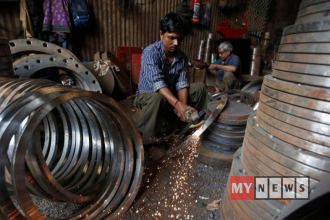The 8th Pay Commission has officially been constituted by the Union Cabinet, with Justice Ranjana Prakash Desai, former Supreme Court judge and current chairperson of the Press Council of India, appointed as its head. The commission’s core responsibility is to recommend revised pay, pension, and allowances for nearly 11.9 million central government employees and pensioners across India.
Mandate and Timeline of the 8th Pay Commission
As per the government notification, the 8th Pay Commission will submit its final recommendations by April 2027, ensuring implementation by January 1, 2026 (retrospectively). The financial impact, however, is expected to be visible in FY28, aligning with the government’s cautious approach toward fiscal responsibility.
Allowances are expected to be implemented prospectively to avoid immediate pressure on the central exchequer. According to analysts, this staggered approach will help manage India’s fiscal deficit while still ensuring relief for employees.
Fiscal Implications of the 8th Pay Commission
Pay, pensions, and allowances together account for a major share of India’s expenditure. For FY26, the outlay is estimated at ₹7 lakh crore, representing about 18% of total revenue expenditure. Of this, allowances alone amount to ₹1.86 lakh crore.
The government’s strategy to stagger implementation across multiple fiscal years aims to prevent a sharp rise in spending. Economists suggest that the main fiscal impact of the 8th Pay Commission will likely surface only after FY28, similar to previous commissions.
Related External Resource (DoFollow): Read more about previous Pay Commissions on India Budget Portal
Members and Terms of Reference
Besides Justice Desai, the commission includes Pulak Ghosh, Professor at IIM Bangalore, as a part-time member, and Pankaj Jain, Secretary, Ministry of Petroleum and Natural Gas, as the Member Secretary.
The Cabinet’s approved Terms of Reference (ToR) direct the commission to complete its work within 18 months, with an option to submit interim reports. The ToR emphasizes economic prudence, resource management, and comparative analysis with the private sector and CPSUs.
Impact on Employees and Pensioners
The 8th Central Pay Commission will directly impact around 5 million serving employees and 6.9 million pensioners. The previous 7th Pay Commission, implemented in 2016, had resulted in a 23.55% increase in pay and pension, adding ₹1.02 lakh crore annually to the government’s expenditure.
Expert Analysis and Economic Outlook
Economist Aditi Nayar, Chief Economist at ICRA, told My Newspaper that the fiscal burden will likely become evident only in FY28, as arrears accumulate from January 2026. She added, “The challenge will be to balance employee welfare with fiscal consolidation.”
Fiscal experts believe the government will rely on phased implementation and budgetary control to ensure macroeconomic stability.
Internal Link: Read about India’s Fiscal Deficit Trends on My Newspaper
Lessons from the 7th Pay Commission
The 7th Pay Commission, effective January 1, 2016, had adopted a staggered model — pay and pension increases were retrospective, while House Rent Allowance (HRA) and other benefits took effect 18 months later, from July 1, 2017. This helped maintain fiscal balance while rewarding employees gradually. A similar structure is expected for the 8th Pay Commission rollout.
Balancing Fiscal Discipline and Employee Welfare
The establishment of the 8th Pay Commission reflects the government’s commitment to both fiscal prudence and employee satisfaction. As India continues to recover from global economic pressures, the panel’s recommendations will play a critical role in shaping public sector compensation over the next decade.
Learning from the 7th Pay Commission
The 7th Pay Commission, effective from January 1, 2016, adopted a similar approach—pay and pensions were applied retrospectively, while allowances such as House Rent Allowance (HRA) were implemented 18 months later. This helped maintain fiscal discipline while granting steady financial relief.
Experts anticipate a similar model for the 8th Pay Commission, ensuring both economic stability and long-term employee satisfaction.
Conclusion: Balancing Fiscal Responsibility and Employee Welfare
The formation of the 8th Pay Commission reflects the government’s effort to balance employee welfare, economic growth, and budgetary discipline. As India’s economy navigates inflationary pressures and global uncertainties, the Commission’s recommendations will shape public sector pay structures for the next decade.
Once finalized, the 8th Pay Commission’s recommendations will mark a historic step in India’s administrative and fiscal evolution, influencing both the central and state government wage systems for years to come.












